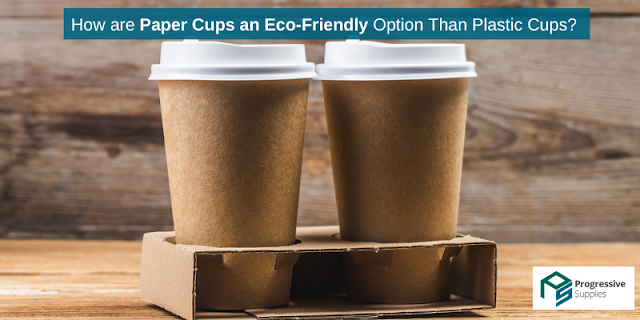How are Paper Cups an Eco-Friendly Option Than Plastic Cups?
Disposable paper cups have become a preferred alternative to the plastic cup varieties. The latter has been criticised because they contribute to environmental pollution. The reason is that plastic is non-biodegradable and non-recyclable. It contaminates the waste stream and clogs the landfill. Hence, more people have switched to paper cups produced by reputable manufacturers. They help minimise environmental footprint and keep the surroundings clean.
The Dangerous Effect of Plastic
We know the harmful effects of drinking water and other beverages from plastic cups. However, using disposal paper cups is a safer bet. They are biodegradable, and you can recycle them. In a short time, nobody recognises the health impacts of drinking from a plastic cup. When you pour a hot drink inside the cup, the plastic makes it poisonous. This makes it unsafe for consumption.
Paper is Recyclable
Studies have found that paper is a leading material that ends up as solid waste. It is one of the fastest decomposing waste materials, and you can recycle it. Paper is not a complicated material, so that you can recycle it without hassle. You can crumple it easily, making it a suitable alternative to plastic.
Paper cups are available in different designs, sizes, colours and prints. The paper plates, bowls and glasses are easily accessible too. You can get customised designs on the cup; however, they can be more expensive. Paper cups are definitely worth the investment for high returns in future. Since it is biodegradable, it doesn’t cause sereve damage to the environment as and can be very easily disposable of as well.
Health Hazards of Plastic Cups
According to the research, frequent use of plastic cups can be a leading cause of cancer. Plastic cups have BPA, which has a dangerous impact on human health. This is why paper cups ensure complete safety for health and the environment. BPA in plastic cups can cause heart problems, liver disease, and diabetes. FDA has limited BPA, so you cannot deny its hazardous effect on human health.
Lifecycle Assessment
The significant difference between plastic and paper cups is the biodegradability factor. You should consider taking the lifecycle assessment test to determined the greenest option. It includes checking factors like ecological impact, carbon footprint, global warming impact, ozone depletion, resource consumption etc.
While checking the longevity factor, you can see that both paper and plastic cups are long-lasting. However, given the harmful impacts of plastic, paper cups are a significant investment in the long run.
Paper against plastic is a definitive choice given the global pollution levels. For maximum effectiveness, you should use paper cups. It is necessary to minimise environmental hazards and aim for a clean future.





Comments
Post a Comment